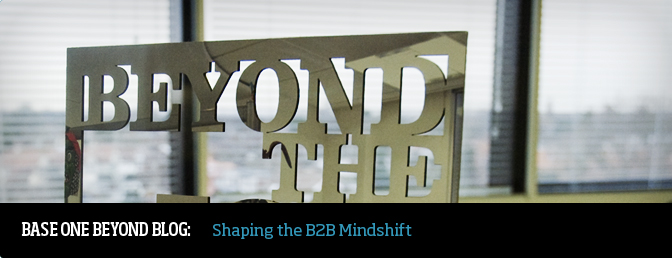Inside the Mind of the B2B Buyer: The Buyersphere Report is launched
April 7, 2010 5:43 PM
DOWNLOAD YOUR FREE COPY NOW
Everyone's talking social media. But are buyers really listening? The Base One B2B Marketing Buyersphere Report - launched today - lifts the lid on the channels that different buyers really use for information and what this means for B2B marketers.
The impact of the digital revolution and the rapid proliferation of marketing channels, tools and techniques is having a profound impact on how B2B brands talk to their audiences. But whilst the likes of blogging, social media, online video etc. are very exciting opportunities to potentially engage your customers, how much do buyers really use them? And how does this compare with more traditional forms of media?
These are amongst the questions that the Buyersphere Report, developed by Base One and B2B Marketing, set out to establish.
The report - which can be downloaded here - is based on a survey of 503 business buyers who have been involved in a purchase worth at least £20,000 in the last 12 months. The survey was carried out by Toluna, with analysis of the results by Base One, McCallum Layton and B2B Marketing.
The report maps the influence and frequency of use of key information channels at three different stages of the buying process: need definition, supplier identification and supplier selection. In doing so, it has unearthed some key patterns that will help marketers plan more effective buyer communications...
The most influential channels, across all stages, were Twitter, Facebook, blogs and word of mouth. These channels provide a personal recommendation, which is clearly valued by business buyers, whether those recommendations are delivered face-to-face or enabled by social media.
But the report also maps usage as well as influence, showing that fewer business buyers were likely to use these emerging social media channels - although it was highly influential to those who did. Analysis of the under 30s age group shows increasing usage of these channels, suggesting that overall preference for them will only grow, as the Facebook generation enters the professional mainstream.
Websites must focus on issues
There is a notable decrease in the influence of supplier websites after the early stages of the buying process. At the need identification stage 57% described websites as influential or very influential, a figure that dropped to 42% by the final supplier selection stage - whereas most other information sources remained constant. Does your website contain issue-based content aimed at the needs identification stage, or does it focus on products? If not, you and many other B2B marketers are missing an opportunity.
Decision makers and influencers act differently
Blogs, Twitter and Facebook were considered significantly more influential by 'main drivers' than they were by 'influencers'; passive channels, on the other hand, such as press advertising were equally influential for both. This suggests that decision-makers feel a need to actively search social media channels for information to support their actions. Not only that, they also value the reassurance of first-hand, peer-to-peer experience, since they are shouldering the responsibility and wish to reduce their risk.
The pros and cons of social media
Over half of respondents (54%) cited benefits to using social media (across all age groups). These were factors like being able to learn from other people's experiences, being able to easily access a wide range of information and the facility to interact with others in a two-way dialogue. At the same time, 59% suggested any weaknesses or difficulties (more likely to be older respondents), including doubts over the extent to which information obtained by these means may be biased or otherwise unreliable and that there can be such a wealth of information out there these days it can be very time-consuming to pick through it.
Want to see the rest of the report? Download it here:
Buyersphere_report.pdf






Reply